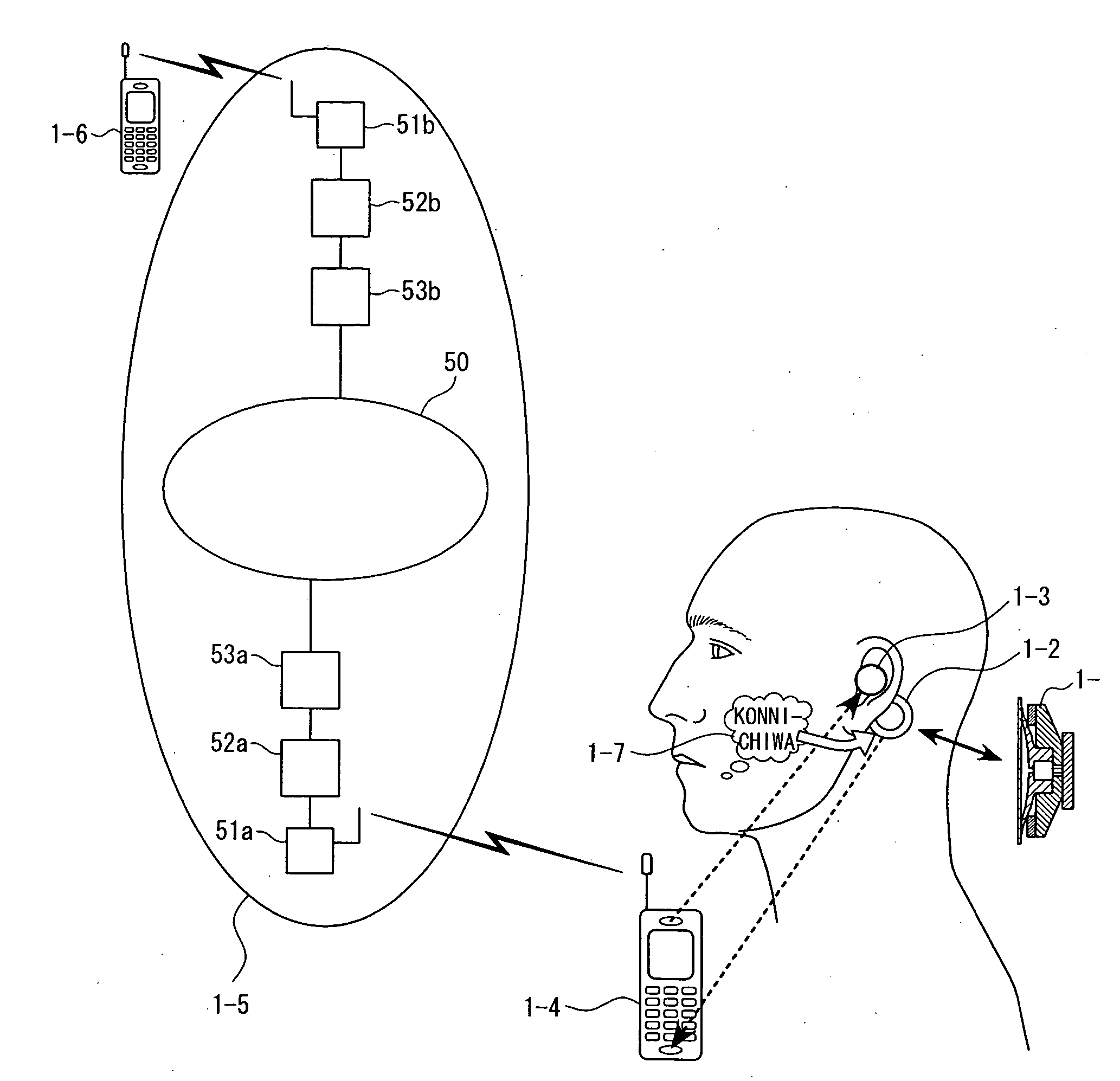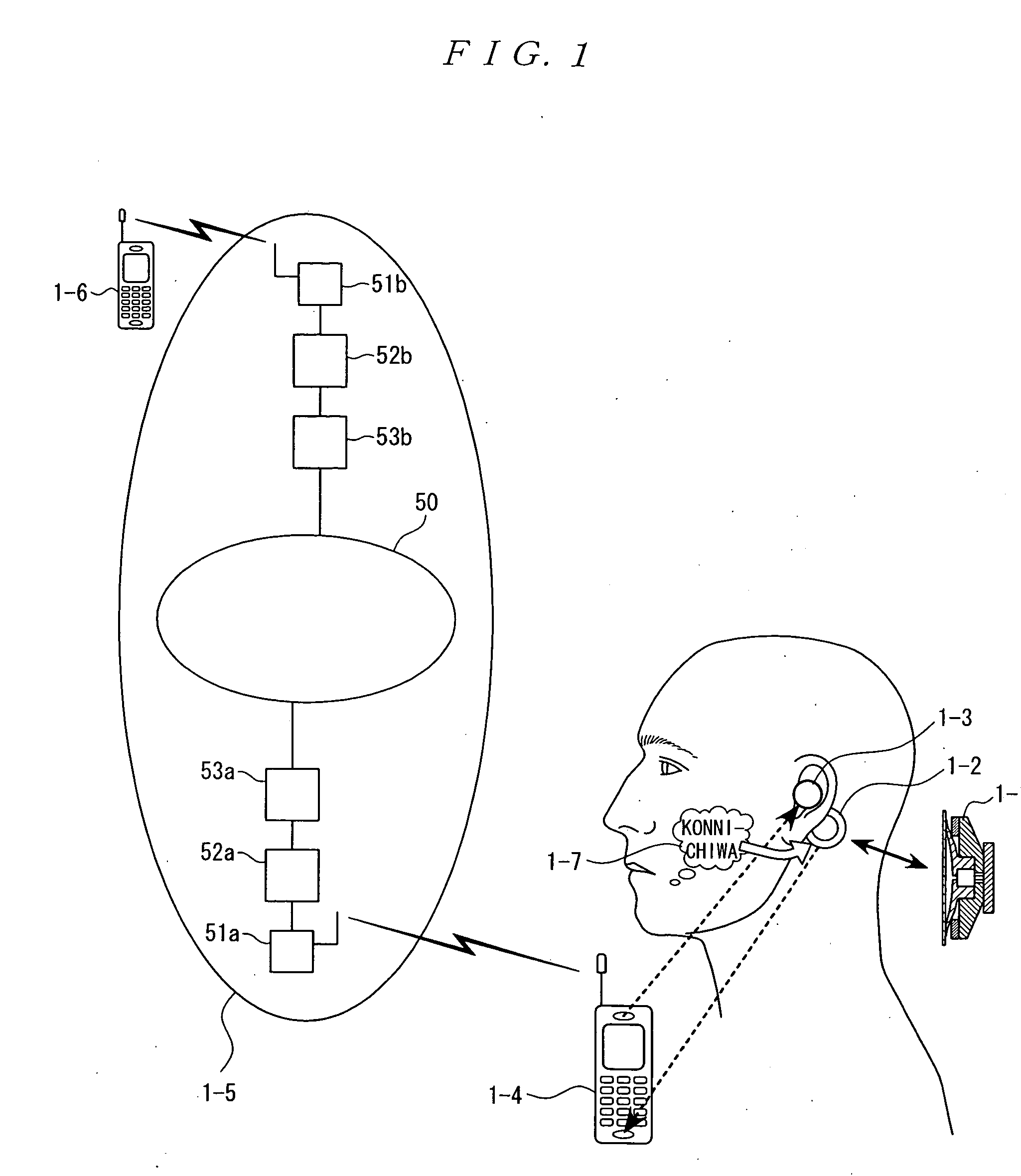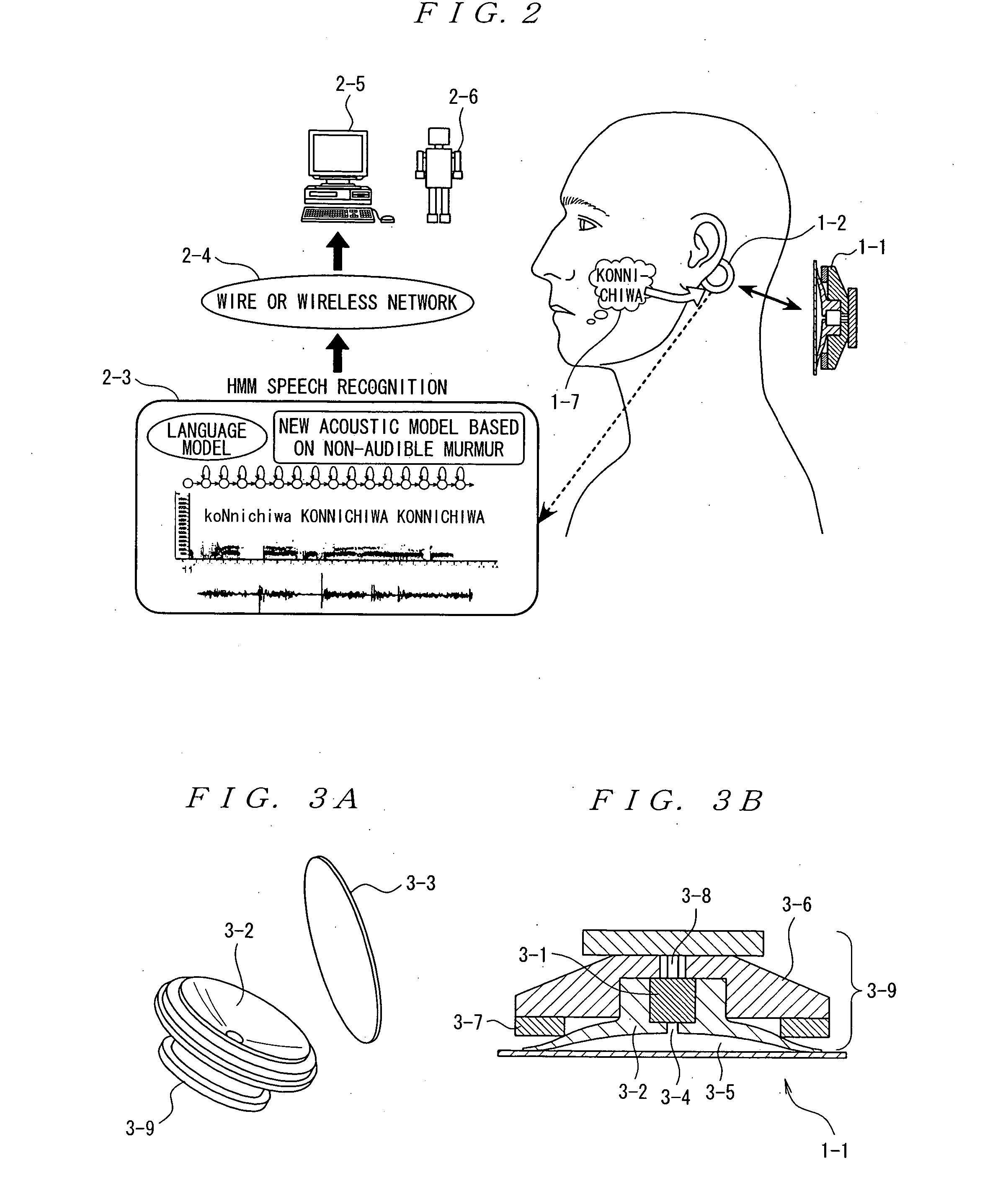Microphone and communication interface system
a communication interface and microphone technology, applied in the field of microphones and communication interface systems, can solve the problems of high cellular phone usage, and high cellular phone usage, and achieve the effects of reducing the cellular phone usag
- Summary
- Abstract
- Description
- Claims
- Application Information
AI Technical Summary
Benefits of technology
Problems solved by technology
Method used
Image
Examples
applied examples)
(Applied Examples)
[0152] Description has been given of the case where only the microphone is installed immediately below the mastoid. In this case, the microphone is exposed and appears odd. Thus, the microphone may be integrated with a head-installed object such as glasses, a headphone, a supra-aural earphone, a cap, or a helmet which is installed on the user's head.
[0153] For example, as shown in FIG. 29, the microphone 1-1 may be provided at an end of a bow portion 31a of glasses 31 which is placed around the ear.
[0154] Alternatively, as shown in FIG. 30, the microphone 1-1 is provided in an earmuff portion 32a of a headphone 32. Likewise, as shown in FIG. 31, the microphone 1-1 may be provided at an end of a bow portion 33a of a supra-aural earphone 33 which is placed around the ear.
[0155] Moreover, as shown in FIG. 32, a cap 34 and the microphone 1-1 maybe integrated together. Likewise, as shown in FIG. 33, a helmet 35 and the microphone 1-1 may be integrated together. By in...
PUM
 Login to View More
Login to View More Abstract
Description
Claims
Application Information
 Login to View More
Login to View More - R&D
- Intellectual Property
- Life Sciences
- Materials
- Tech Scout
- Unparalleled Data Quality
- Higher Quality Content
- 60% Fewer Hallucinations
Browse by: Latest US Patents, China's latest patents, Technical Efficacy Thesaurus, Application Domain, Technology Topic, Popular Technical Reports.
© 2025 PatSnap. All rights reserved.Legal|Privacy policy|Modern Slavery Act Transparency Statement|Sitemap|About US| Contact US: help@patsnap.com



